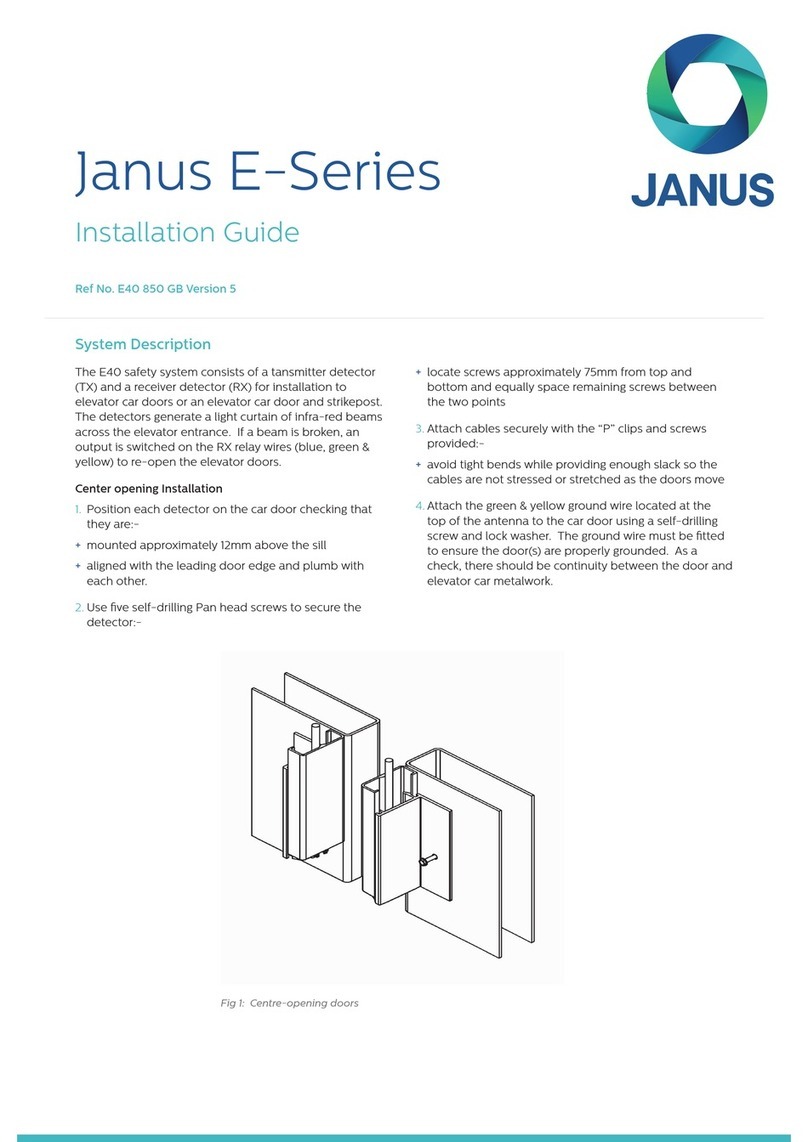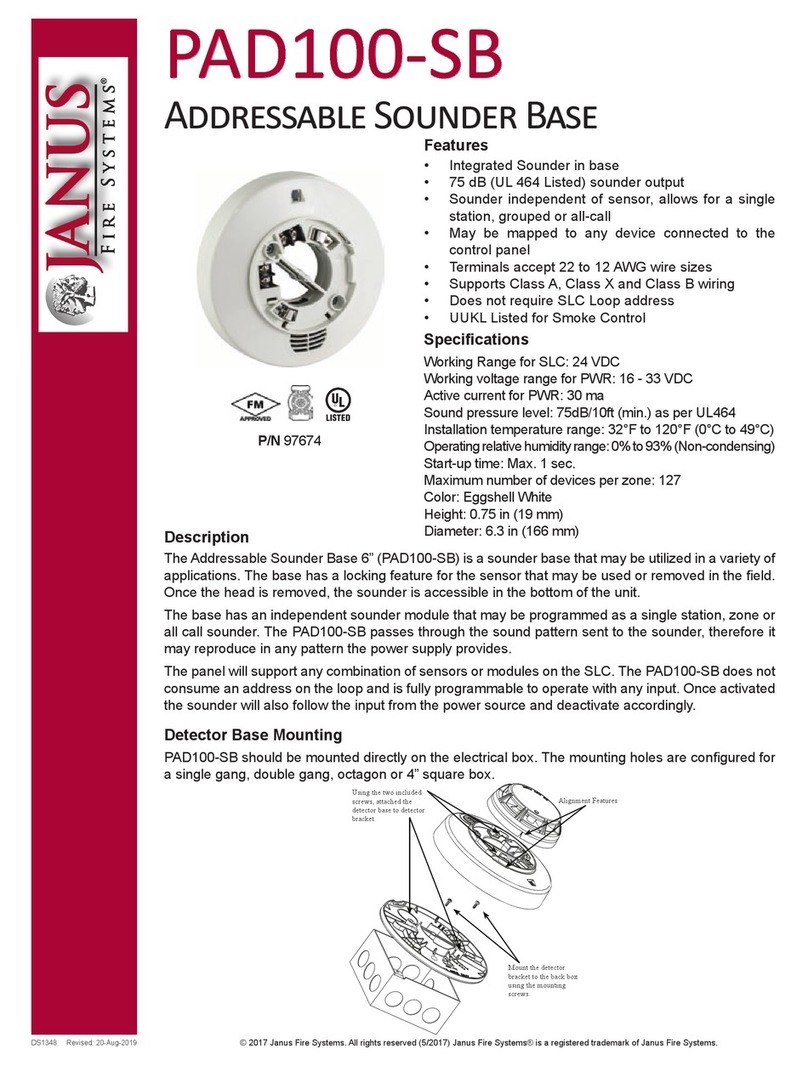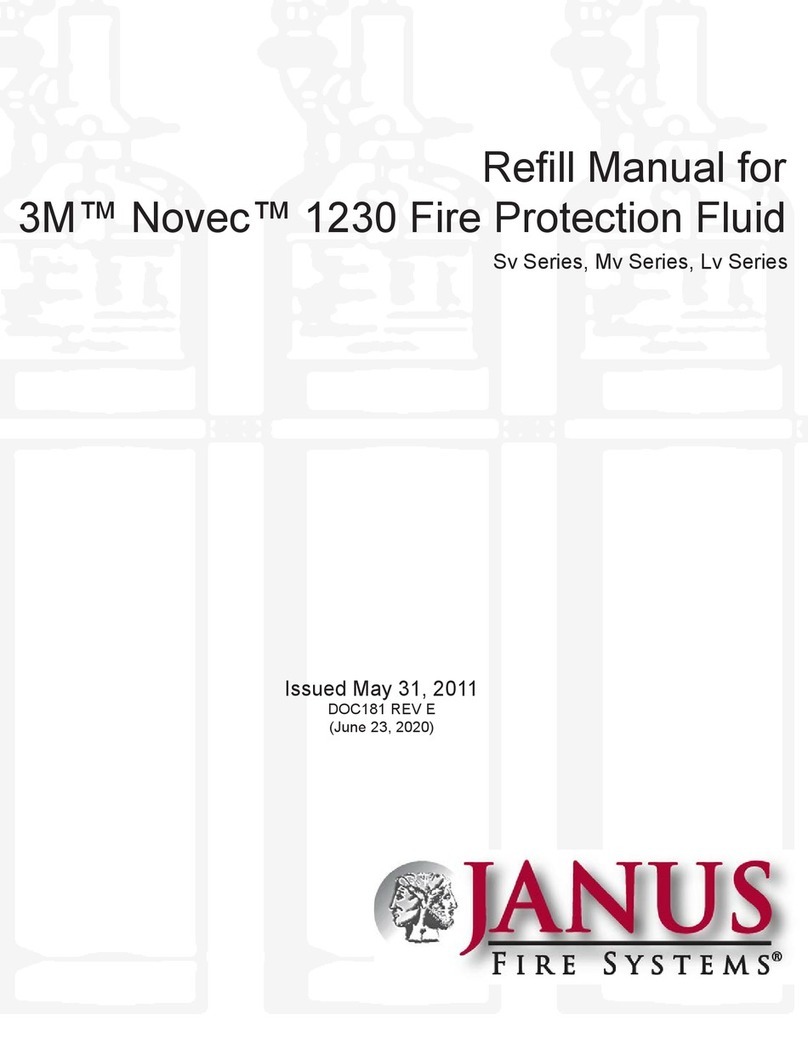
Page: 1
FM-200® FILL MANUAL
Revision B Document # DOC180
Issued: August 16, 2010
Revised: April 2, 2012
Section 1 General Information
1 GENERAL INFORMATION
is manual describes the procedure for lling Janus Fire Systems® Sv Series, Mv Series, and Lv Series
cylinder assemblies with FM-200® agent.
1.1 Listings and Approvals
To maintain FM Approval for Janus Fire Systems® Fire Suppression Systems, cylinder recharge must be
performed at a Janus Fire Systems® recognized facility.
1.2 Extinguishing Agent
FM-200® (HFC-227ea) is a colorless, non-toxic gas and a clean, eective, environmentally acceptable,
electrically non-conductive re suppression agent. It is formed from the elements carbon, uorine and
hydrogen (CF3CHFCF3 - heptauoropropane). e primary extinguishing mechanism of FM-200® is
heat absorption, with a secondary chemical contribution from the thermal decomposition of FM-200® in
the ame.
Most metals, such as aluminum, brass, steel, and stainless steel, as well as plastics, rubber, and electronic
components, are not aected by exposure to FM-200®.
In Janus Fire Systems® FM-200® Fire Suppression Systems, the FM-200® agent is stored as a liquid in steel
cylinders and superpressurized with nitrogen to 360 psig (24.8 bar) at 70°F (21.1°C) to improve its ow
characteristics. When discharged, FM-200® vaporizes at the discharge nozzles and becomes thoroughly
mixed with the air throughout the protected area reaching a predetermined design concentration.
1.3 Safety Considerations
All safety guidelines contained in this manual must be read and understood before lling any Janus Fire
Systems® cylinder. All applicable guidelines shall be followed before, during, and after the ll procedure
including any additional local standards or regulations determined by the authority having jurisdiction
(AHJ). Where the guidelines in this manual and local guidelines or regulations conict, the most stringent
requirement should be followed.
ose individuals responsible for the lling of a Janus Fire Systems® FM-200® cylinder assembly must be
trained.
At a minimum, Janus Fire Systems recommends the following safety equipment be worn at all times during
the ll procedure:
• Work boots with protective toe guards
• Safety glasses or goggles
• Gloves to prevent injury of the hands or ngers.
• Properly tting clothing.
• Properly tting ear plugs or other hearing protection.































